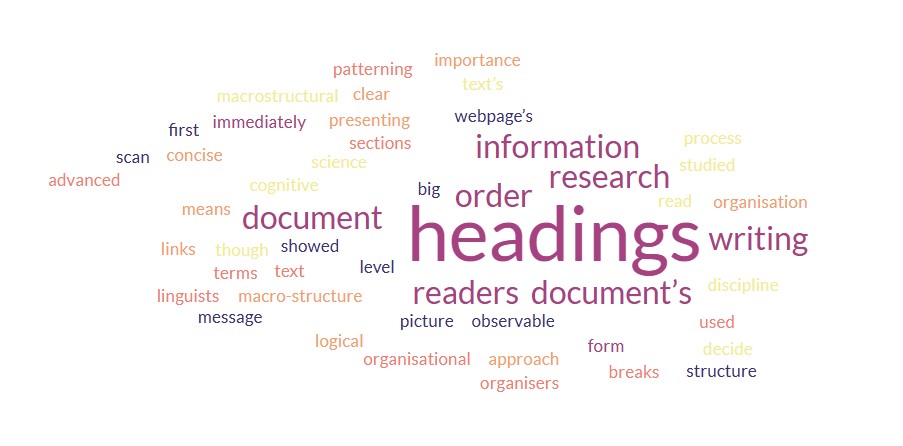
By Dana P Skopal, PhD
Our previous blogs have referred to using headings as signposts and having key words in headings. Interestingly, in our recent editing work we have noticed how many writers could not create structured headings when placing their technical data in a report or else did not link their text/content to an appropriate heading. As a writer, are we often too focused on the technical details and overlook how to guide our reader through the information?
Headings form the most immediately observable level of a document’s structure (regardless if it is paper printed, a PDF format, or a webpage), that is, the big picture of that message. Our research showed that many readers first scan headings and then decide the order in which they will read the document. Research in the discipline of cognitive science has studied how readers process information though the text’s ‘macrostructural’ organisation (see Lacroix, 1999). This links to our approach to clear writing and the importance of a document’s macro-structure, which means presenting a logical information order through concise headings and document sections. Other terms used by linguists are organisational breaks and patterning in the text (see Hoey, 1994), and advanced organisers and headings (see Hyland, 2002). Perhaps think of writing headings that present an organised pattern for your reader.
When planning your document, draft the structural signposting for your reader as you set out the ‘big picture’ or global organisation of all the information. One review process is to take your headings and first sentence of each paragraph, place them into a new document and check that they make sense to an independent reader (without the remaining paragraph content).
References
Lacroix, N. (1999). Macrostructure construction and organization in the processing of multiple text passages. Instructional Science, 27, 221-233.
Hoey, M. (1994). Signalling in Discourse: a functional analysis of a common discourse pattern in written and spoken English. In M. Coulthard (Ed.), Advances in Written Text Analysis (pp. 26-45). London/ New York: Routledge.
Hyland, K. (2002). Specificity revisited: how far should we go now? English for Specific Purposes, 21, 385-395.
Copyright © Opal Affinity Pty Ltd 2024
